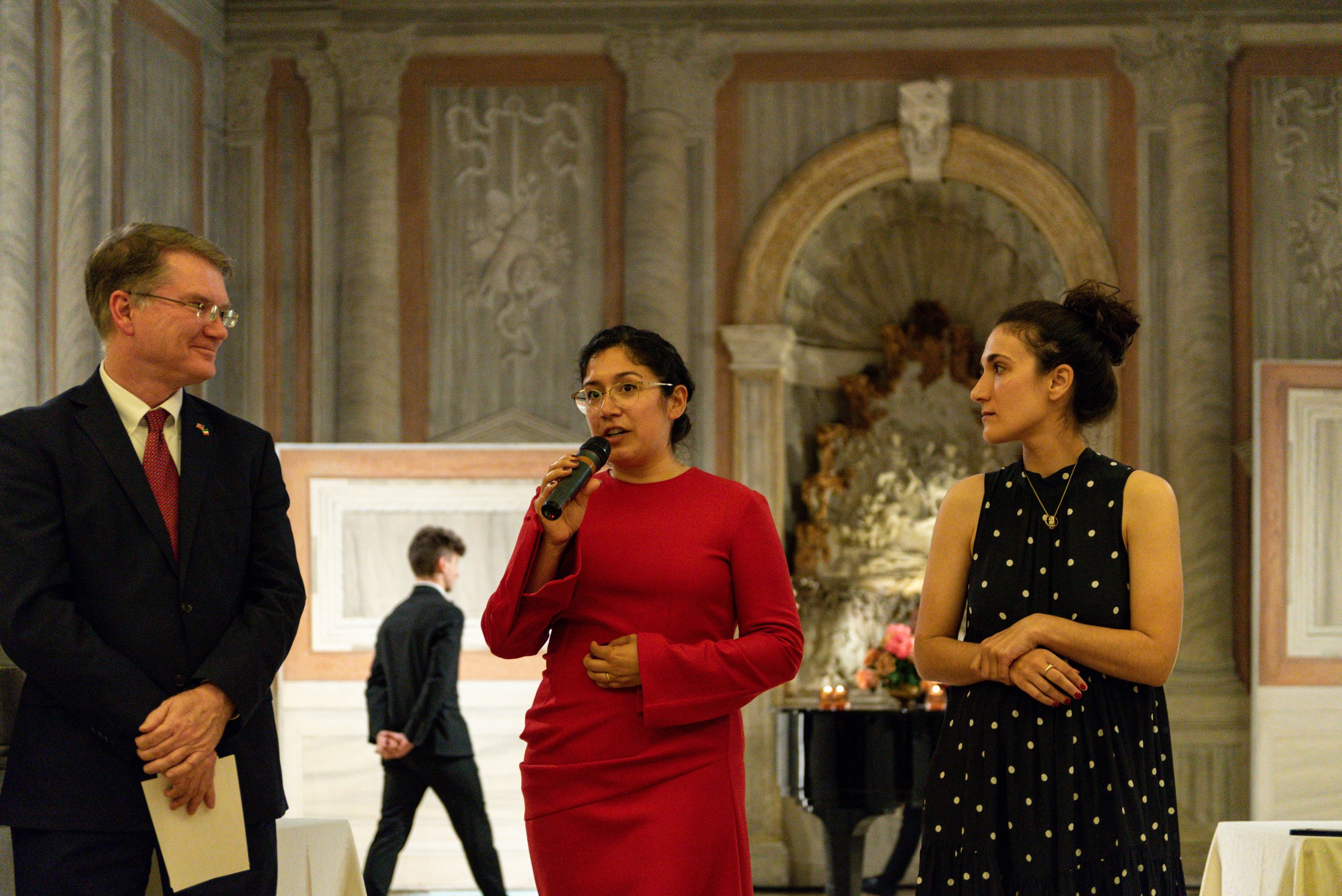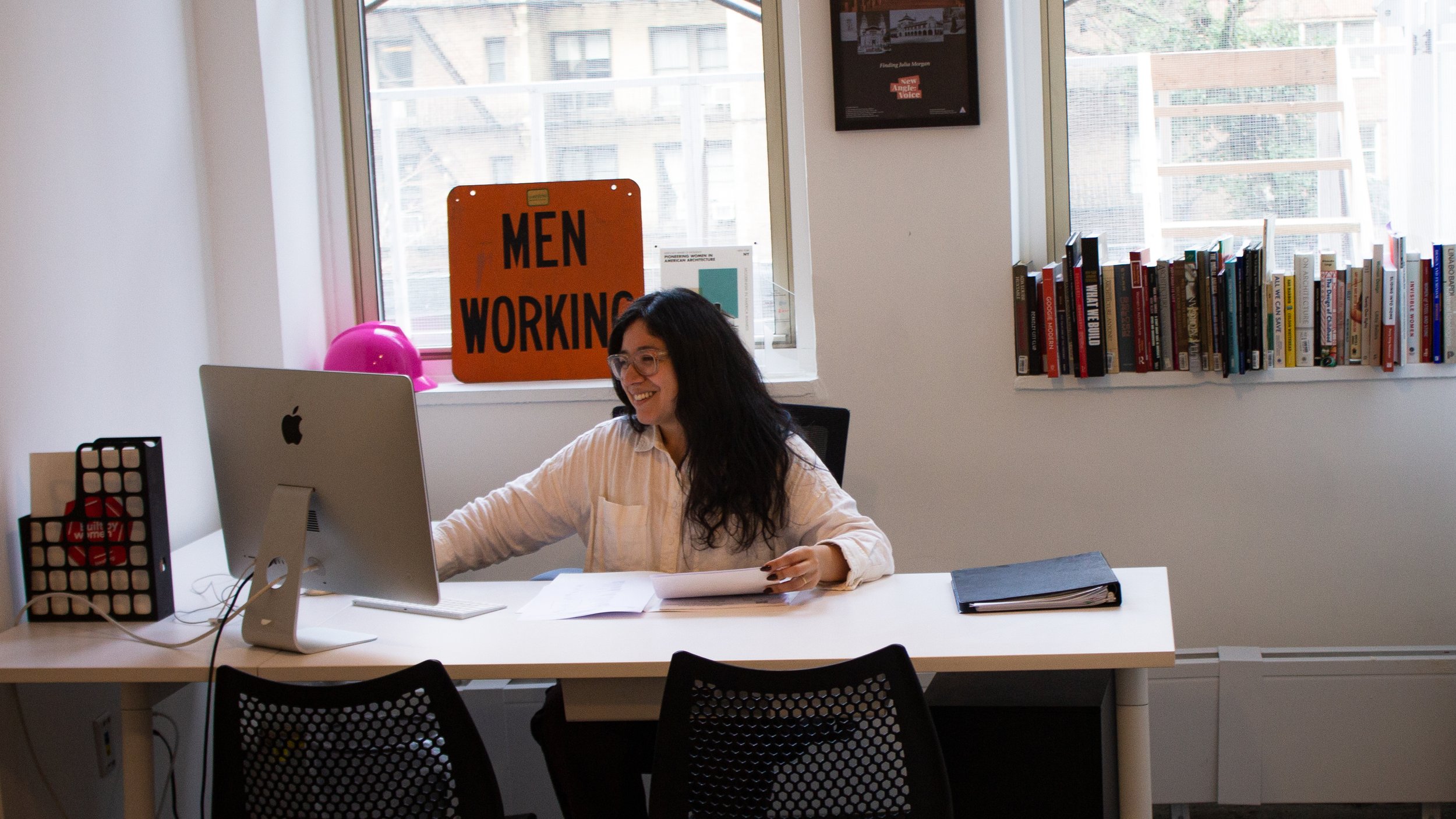Broadening Footprints: The Beverly Willis Architecture Foundation's Executive Director Tizziana Baldenebro on the Next Chapter
Tizziana Baldenebro is the executive director at the Beverly Willis Architecture Foundation. An arts administrator, curator, writer, and critic, her practice focuses on emerging artists and designers, and she is an activist in the effort to produce equitable cultural centers. She was the Commissioner and Curator for the U.S. pavilion at the 2023 Venice Architecture Biennale. Previously, she served as the executive director at SPACES in Cleveland and has held positions at the Museum of Contemporary Art Detroit and at the Art Institute of Chicago within the Architecture & Design department.
Tizziana sat on the board of FRONT International and is an editor-at-large at The Avery Review. She was a 2021 fellow in the National Association for Latino Arts and Culture Advocacy Leadership Institute and was a 2021 curator-in-residence at Red Bull Arts Detroit. Baldenebro received a Masters of Architecture from the School of the Art Institute of Chicago and a Bachelor of Arts degree in Anthropology from the University of Chicago. In her interview with Julia Gamolina, Tizziana talks about her curatorial background and her approach to leadership, advising those just starting their careers to build their networks.
JG: Congratulations on your new role as Executive Director of BWAF! This is very exciting for us all. Given the organization's incredible history and contributions, what is your vision for yourself and your role, and for the organization in 2024?
Thank you so much — I’m incredibly honored to take the helm of the Beverly Willis Architecture Foundation (BWAF) in this critical moment of transformation. Alongside Beverly’s recent passing, we also have new board leadership and a new office space in Hudson Yards. It is an important moment to steer the ship carefully, even as I start to build my own ideas for what BWAF might be. My vision, for now, is to strengthen the visibility and existing programs of the organization. We have a deep base, but I’d like to build a wider base by platforming some of the initiatives we already have, like our incredibly successful and meaningful Emerging Leaders program, which invites dozens of young women in architecture, engineering and construction (AEC) to network and establish a form of collective mentorship.
The program is truly fantastic, and I know many of my peers who have gone through it. Wonderful!
Going back a little now, you studied Anthropology at the University of Chicago, and then got your M.Arch from the Art Institute of Chicago. What were you hoping to do in the world with both?
To be honest, there wasn’t much of a plan. My dad was a florist and my mother was caretaker and housekeeper. Neither of them had gone to college, so they didn’t really have much influence in terms of a particular field of study or direction — they just wanted to support me. I studied anthropology, though, because I was interested in people and cultures. Architecture came next because I was living and working in Chicago, and it’s almost impossible to not fall in love with the field when you’re in Chicago.
Anthropology and architecture are more compatible, though, than they sound. So much of what we understand about ancient peoples and cultures is inferred from how they structured their built environments, so the two fields really go hand-in-hand. I quickly learned however, that I hated drafting and drawing and all the things that make architects good, so I had to carve a new path, and that was through curatorial work.
Tizziana at the U.S. Pavilion at the Venice Architecture Biennale. Courtesy of Tizziana Baldenebro.
And you’ve done significant work in curation — with SPACES, with the Biennale, with MOCAD. What do you bring to your current role from these experiences?
Curatorial work in architecture exists as almost a third parallel field to academia and practice. It is a different way of thinking, critiquing, and spatializing. I think curators try to bridge the conversations, heighten the tensions, and explore new ways of thinking through architecture. But perhaps more literally, curators have to be incredible project managers. There are so many moving parts and you have to be very savvy about where to direct resources and energy. As we broaden our footprint at BWAF, we will be able to channel some of that approach in thoughtful and productive ways.
“Curatorial work in architecture exists as almost a third parallel field to academia and practice. It is a different way of thinking, critiquing, and spatializing.”
Looking back at it all, what have been the biggest challenges? How did you both manage through perceived disappointments or setbacks?
Oftentimes, the biggest challenge is balancing the needs of artists, designers, and architects with the realities of a small organization. Trying to balance an annual budget in 2024 is no easy feat. So, I work to build transparent organizations, where I try to openly discuss finances and funding limitations, not only with folks working with the organization, but also within the organization. Communicating honestly and clearly about pay scales, for example, or having open discussions about roles and responsibilities, helps everyone feel invested. At BWAF, we are a small organization, but we have an incredible board of directors and we are having those finance conversations now. How we grow the organization beyond one staff member will define our capacity for the next generation of women AEC workers.
BWAF Board Meeting at Grace Farms. Courtesy of Tizziana Baldenebro.
What have you also learned in the last six months?
Well, I am a recent transplant to New York, so, I am learning about the rats, the subways, the summer and spring days, the floods, alternate side parking, bodegas, and corner stores, and all the things that make this city great and complicated.
[Laughs] Welcome. Who are you admiring now and why?
During the tail-end of the Biennale Architettura, I had the chance to meet the indefatigable Lesley Lokko. She radiated warmth and energy in a really impactful way and she crafted such a beautiful exhibition around decarbonization and decolonization. It was an honor to curate the US Pavilion during her time as curator of La Biennale. She also writes spicy books, which is just about the most admirable thing I can think of an architect doing in their spare time.
“I work to build transparent organizations, where I try to openly discuss finances and funding
limitations...Communicating honestly and clearly about pay scales, for example, or having open discussions about roles and responsibilities, helps everyone feel invested.”
What is the impact you’d like to have on the world? What is your core mission? And, what does success in that look like to you?
Over the past few years, I’ve really let the opportunities that arise lead me. I’m not sure I will impact the world, but I hope to impact my immediate community by contributing meaningfully to causes that are important to me, being a good neighbor, being a respectful subway rider, being true to myself, being an engaged citizen, etc. I guess these are the building blocks for a better world, so maybe that is success for me.
Tizziana at the Bev. Courtesy of Tizziana Baldenebro.
Tizziana at the Bev. Courtesy of Tizziana Baldenebro.
Finally, what advice do you have for those starting their career? Would your advice be any different for women?
Build your networks! I mean, truly, having a network of people you respect and care for can have tremendous influence on your path. It is why I thought the work of BWAF was so important. Many architects, as a culture, have been obsessed with the lone male star-chitect, scribbling away at a drafting table at 2AM. The built environment is the result of a constellation of people working together, and each person is a reflection of their own constellation. It’s really beautiful! My advice would not be different based on a person’s sex or gender. We all need to learn to see people as their whole selves.
This interview has been edited and condensed for clarity.




